Shaode Yu
Exploring Kolmogorov-Arnold networks for realistic image sharpness assessment
Sep 12, 2024Abstract:Score prediction is crucial in realistic image sharpness assessment after informative features are collected. Recently, Kolmogorov-Arnold networks (KANs) have been developed and witnessed remarkable success in data fitting. This study presents Taylor series based KAN (TaylorKAN). Then, different KANs are explored on four realistic image databases (BID2011, CID2013, CLIVE, and KonIQ-10k) for score prediction by using 15 mid-level features and 2048 high-level features. When setting support vector regression as the baseline, experimental results indicate KANs are generally better or competitive, TaylorKAN is the best on three databases using mid-level feature input, while KANs are inferior on CLIVE when high-level features are used. This is the first study that explores KANs for image quality assessment. It sheds lights on how to select and improve KANs on related tasks.
Elastic Net based Feature Ranking and Selection
Dec 30, 2020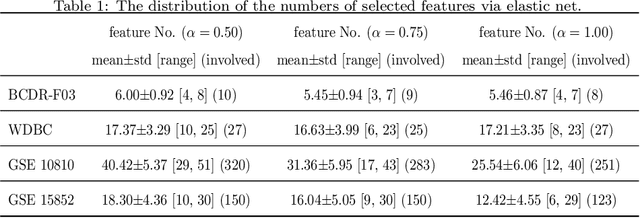
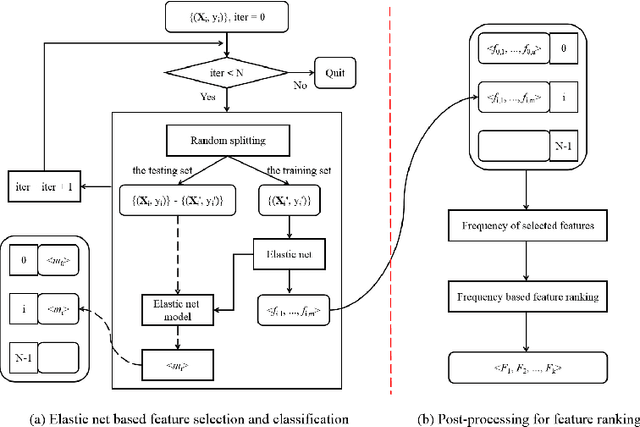
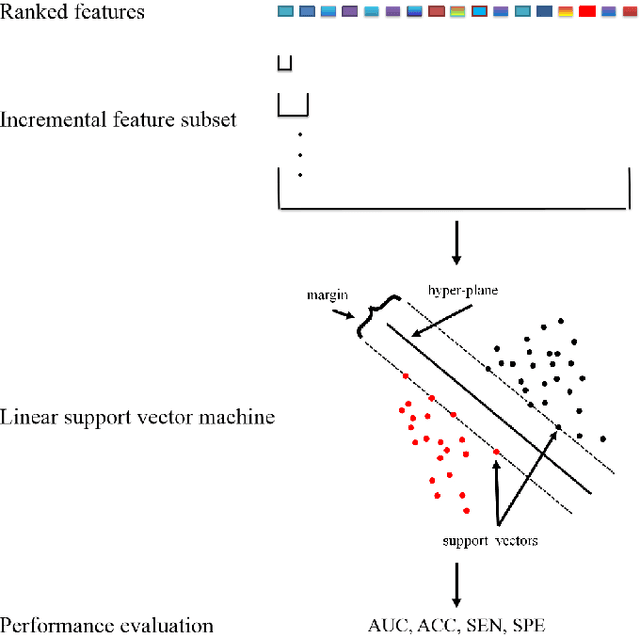
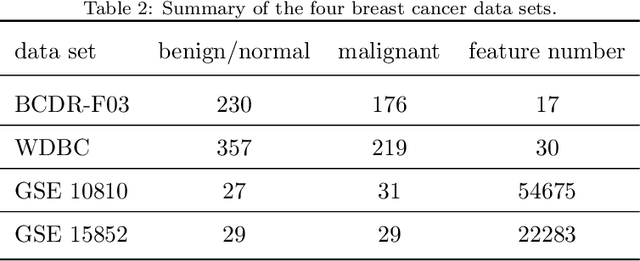
Abstract:Feature selection is important in data representation and intelligent diagnosis. Elastic net is one of the most widely used feature selectors. However, the features selected are dependant on the training data, and their weights dedicated for regularized regression are irrelevant to their importance if used for feature ranking, that degrades the model interpretability and extension. In this study, an intuitive idea is put at the end of multiple times of data splitting and elastic net based feature selection. It concerns the frequency of selected features and uses the frequency as an indicator of feature importance. After features are sorted according to their frequency, linear support vector machine performs the classification in an incremental manner. At last, a compact subset of discriminative features is selected by comparing the prediction performance. Experimental results on breast cancer data sets (BCDR-F03, WDBC, GSE 10810, and GSE 15852) suggest that the proposed framework achieves competitive or superior performance to elastic net and with consistent selection of fewer features. How to further enhance its consistency on high-dimension small-sample-size data sets should be paid more attention in our future work. The proposed framework is accessible online (https://github.com/NicoYuCN/elasticnetFR).
A Matlab Toolbox for Feature Importance Ranking
Mar 10, 2020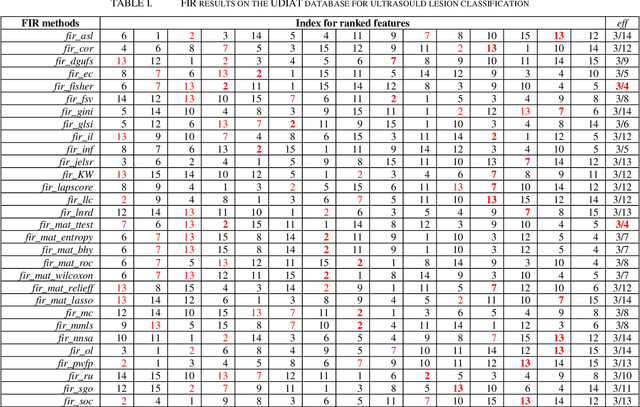
Abstract:More attention is being paid for feature importance ranking (FIR), in particular when thousands of features can be extracted for intelligent diagnosis and personalized medicine. A large number of FIR approaches have been proposed, while few are integrated for comparison and real-life applications. In this study, a matlab toolbox is presented and a total of 30 algorithms are collected. Moreover, the toolbox is evaluated on a database of 163 ultrasound images. To each breast mass lesion, 15 features are extracted. To figure out the optimal subset of features for classification, all combinations of features are tested and linear support vector machine is used for the malignancy prediction of lesions annotated in ultrasound images. At last, the effectiveness of FIR is analyzed according to performance comparison. The toolbox is online (https://github.com/NicoYuCN/matFIR). In our future work, more FIR methods, feature selection methods and machine learning classifiers will be integrated.
Performance Evaluation of Edge-Directed Interpolation Methods for Images
Mar 26, 2013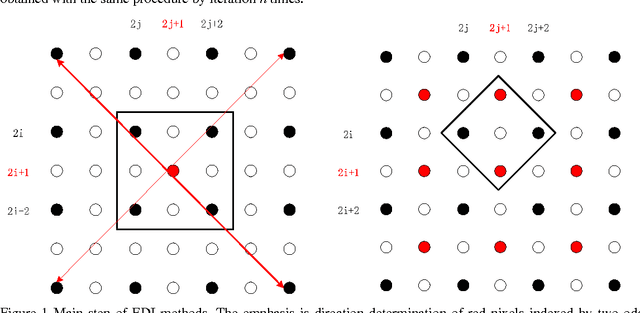
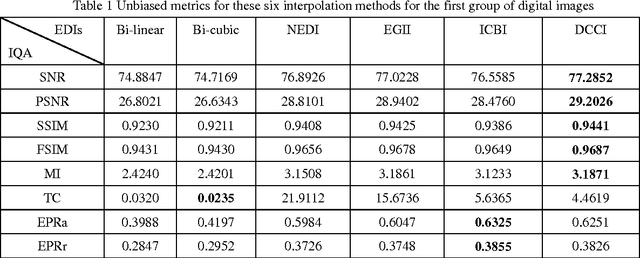
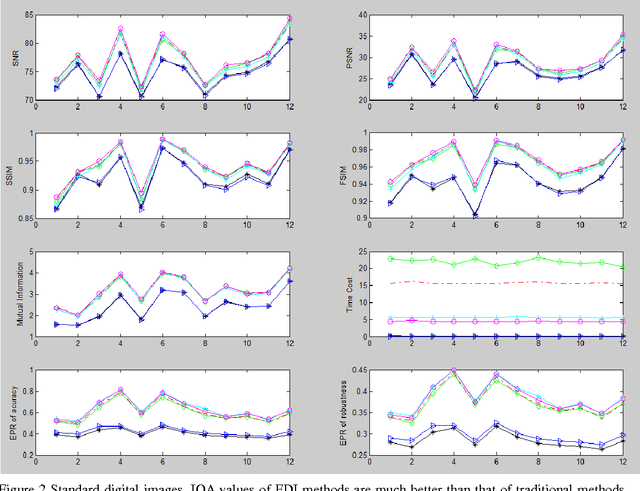
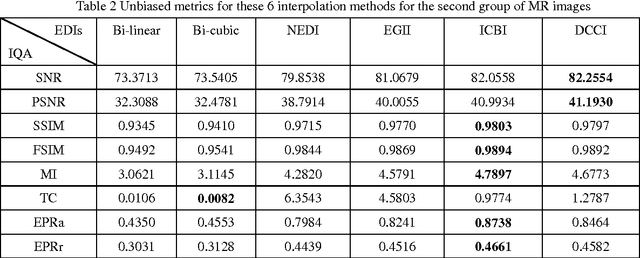
Abstract:Many interpolation methods have been developed for high visual quality, but fail for inability to preserve image structures. Edges carry heavy structural information for detection, determination and classification. Edge-adaptive interpolation approaches become a center of focus. In this paper, performance of four edge-directed interpolation methods comparing with two traditional methods is evaluated on two groups of images. These methods include new edge-directed interpolation (NEDI), edge-guided image interpolation (EGII), iterative curvature-based interpolation (ICBI), directional cubic convolution interpolation (DCCI) and two traditional approaches, bi-linear and bi-cubic. Meanwhile, no parameters are mentioned to measure edge-preserving ability of edge-adaptive interpolation approaches and we proposed two. One evaluates accuracy and the other measures robustness of edge-preservation ability. Performance evaluation is based on six parameters. Objective assessment and visual analysis are illustrated and conclusions are drawn from theoretical backgrounds and practical results.
 Add to Chrome
Add to Chrome Add to Firefox
Add to Firefox Add to Edge
Add to Edge